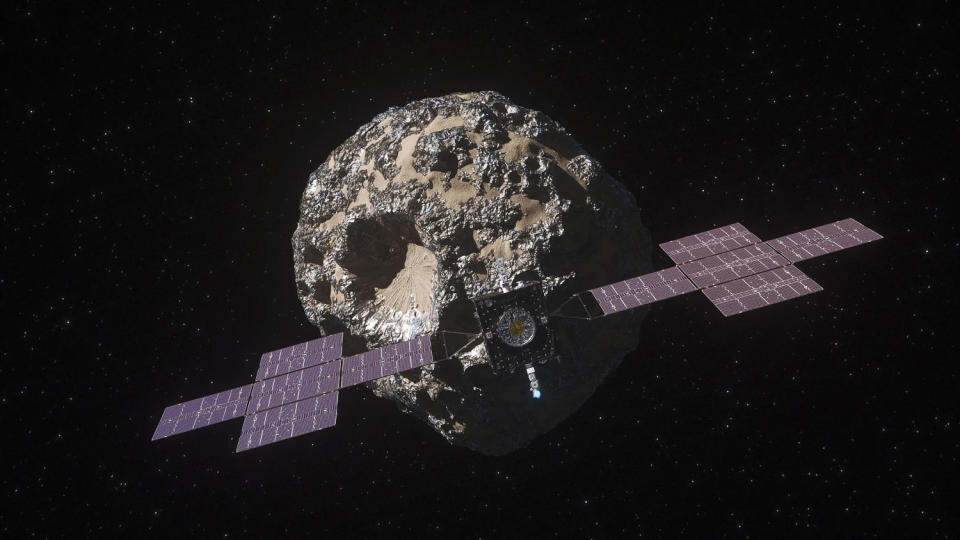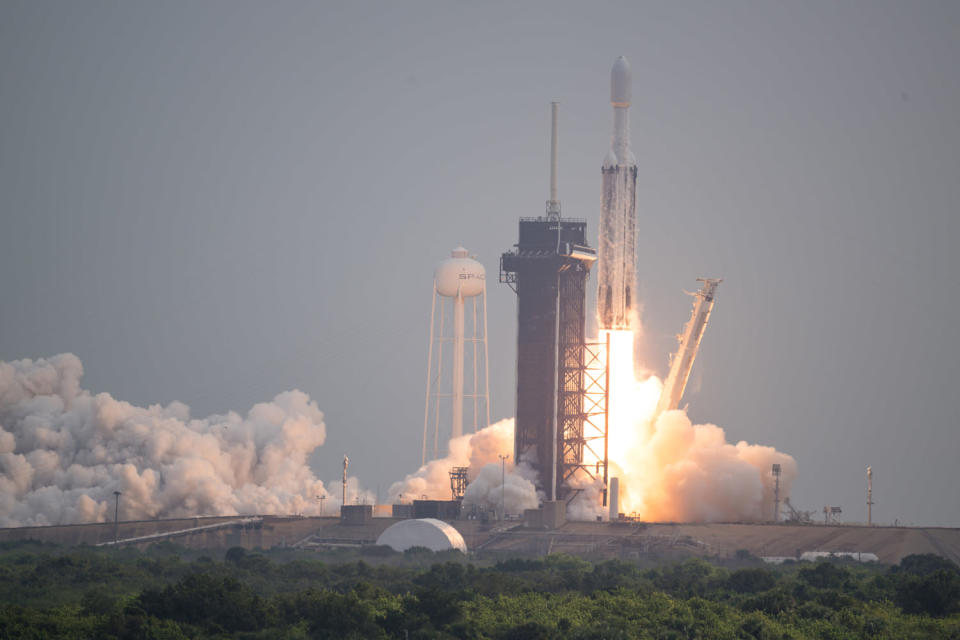NASA's Psyche spacecraft launches on first mission ever to a metal-rich asteroid
A NASA probe launched into space Friday on a 2.2-billion-mile journey to a huge, metal-rich space rock in the main asteroid belt between Mars and Jupiter.
The Psyche spacecraft lifted off atop one of SpaceX’s Falcon Heavy rockets at 10:19 a.m. ET from the Kennedy Space Center in Florida. The probe will now spend years traveling into deep space en route to an asteroid also named Psyche, which may have once been part of the core of a “planetesimal,” a type of small celestial body that is a crucial building block of rocky planets in our solar system.
The mission is the first to study a metal-rich space rock up close. Scientists are keen to investigate the asteroid Psyche because it could help them answer some of the enduring mysteries about how the solar system came to be.
When the spacecraft arrives at the asteroid in 2029, its onboard instruments will examine its chemical makeup, study its mineral composition and scour for evidence of an ancient magnetic field.
“Brace yourself for the mind-blowing revelations it will bring about planetary formation and the birth of rocky planets like our beloved Earth,” NASA Administrator Bill Nelson wrote on X, the platform formerly known as Twitter.

Using Earth-based radar and optical telescopes, scientists think the asteroid Psyche was part of the core of a rocky celestial body that never formed into a planet. The asteroid, which is about as wide as Massachusetts, may have smashed into other objects early in its formation, causing it to lose its outer rocky shell, according to NASA.
Researchers think all rocky, terrestrial planets like Earth have metallic cores, but scientists can’t easily study the metal-rich interior of our home planet because it lies so deep beneath the thick mantle and crust.
Agency officials have said that the Psyche mission could give researchers a unique opportunity to learn more about the chaotic and violent origins of the solar system, including how planets like Earth were created.
“I am excited to see the treasure trove of science Psyche will unlock as NASA’s first mission to a metal world,” Nicola Fox, associate administrator for the Science Mission Directorate at NASA Headquarters, said in a statement. “By studying asteroid Psyche, we hope to better understand our universe and our place in it, especially regarding the mysterious and impossible-to-reach metal core of our own home planet, Earth.”

The Psyche mission will also be the first to use Hall-effect thrusters, a type of solar electric propulsion system, in deep space. The system works by harnessing energy from solar arrays and then expelling charged atoms of xenon gas to create thrust.
Similar propulsion technologies were used for NASA’s Dawn spacecraft, which launched in 2007 on a mission to study two large objects in the main asteroid belt. The Psyche mission, however, will be the first time this particular solar electric propulsion system will be used beyond the moon, agency officials said.
The Psyche spacecraft’s launch is the latest event in what NASA has dubbed “asteroid autumn.” Earlier this week, NASA also unveiled newly retrieved samples from a 4.5-billion-year-old asteroid that contain intriguing traces of carbon and water, findings that could yield insights into how the solar system formed and how life started on Earth.
This article was originally published on NBCNews.com

